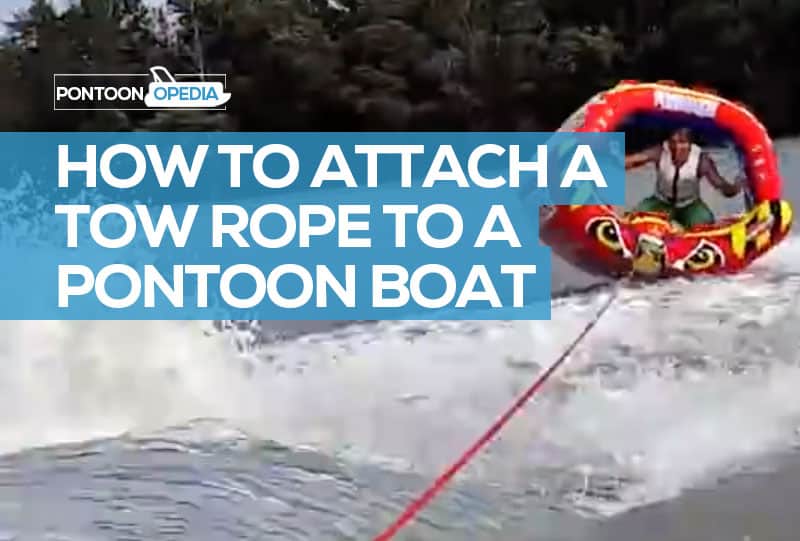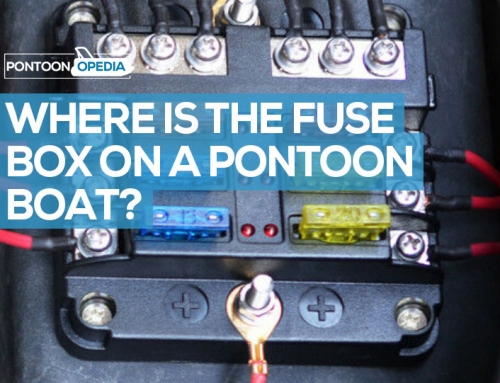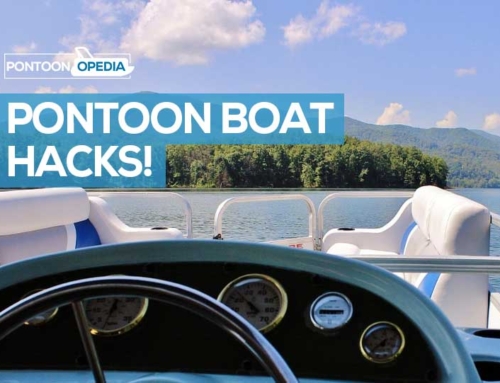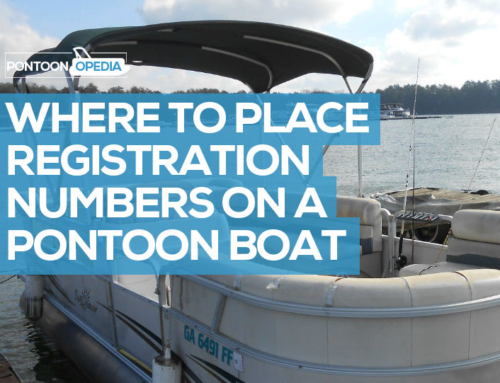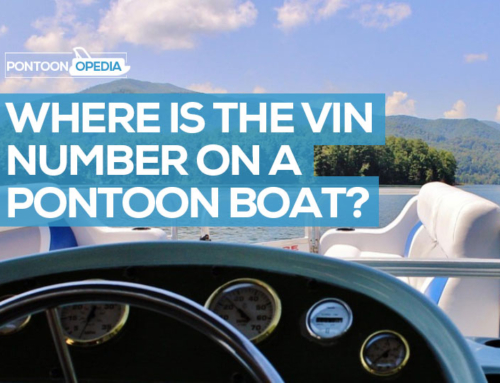If your pontoon boat is powerful enough, you can pull tubes and skiers along at decent speeds. Not all pontoon boats will give you enough power from the outboard, but with a higher HP engine and good enough boat, you should be able to have hours of fun on the water.
However, it’s not always immediately clear on whether you should attach your tow rope to the grommets, cleats or eyes on your pontoons, or onto a ski tow bar (if you have one).
You will hear some conflicting information on what’s best and why.
I’ve been towing behind my pontoon boat for a few years now, and initially used to use the cleats on the back of the pontoons.
However, I don’t do that anymore.
And there’s a good reason why.
I don’t believe that cleats are a suitable tow point at all. The reason being, if the cleat pulls through it will become a dangerous missile projectile that seriously injure or kill someone being pulled behind you.
Cleats or eyes should not be used as a tow point (in my opinion).
That’s not to say people don’t attach a tow rope to their pontoon boat this way. They do and have great success… but I just don’t believe it’s a safe thing to do for the reason I already stated.
I am not the only saying this either. Here’s a quote online I saw from a pontooner I really respect:
“I would never hook up any tow rope to the grommets on the actual tubes unless you don’t mind stress cracks appearing on the welds and possibly creating bigger problems in the future. I am having a tow bar installed as it’s way safer.”
So, what should you do instead?
Well, you have a few options.
How to attach a tow rope to a pontoon boat
#1: Use a tow bar fitted to the rear
By far my preferred way on how to attach a tow rope to a pontoon boat is using a tow bar.
If your pontoon boat doesn’t already have one, you should speak with your boat dealer to see if they have any options or look to purchase one online.
#2: Use tie down points on the pontoons
Alternatively, you could try using tie down points on your pontoons, and then use a Y-rope harness attachment to make it secure.
What other people say
I don’t just want you to take my word and advice and think it’s only fair to give you a wider representation of what people on the web are saying about attaching a tow rope to a pontoon boat.
Here is a selection of answers I received back when I put the question out on social media.
“You should always use a ski tow bar. The rope mounts in the center. Since it is higher it will help keep the rope out of the water. If you don’t have a ski tow, the next option would be cleat or grommet in the log. I always attach to the log. Most manufacturers have the ski tows as an option or can be purchased later, think there may be a few after-market one out there too.”
“We have a ski tow bar on ours. We like how it holds the rope up out of the water. On our old pontoon boat the rope hooked onto u-bolts down by the deck, but I we didn’t get great results that way, as the rope was too low down into the water.”
“My Premier has a square tubular aluminum transom with factory towing points on both sides of the engine for towing tubes. Mounted ski bars don’t work that well for inflatable tubes. And, in my manual it says to not tow from the eyes on the pontoons, instead you could I use a cleat.”
Pontoon Boat Tow Rope Attachments: Enhancing Water Sports Experience
Engaging in water sports behind a pontoon boat requires a secure and appropriate attachment method for the tow rope. Different attachment methods offer varying levels of convenience, safety, and functionality, depending on the pontoon boat model and the specific water sport. This article will compare ski pylons, tow bars, and cleats, discuss their suitability for different pontoon boat models and water sports, and provide a step-by-step guide on attaching a tow rope.
- Ski Pylons: Vertical posts designed for attaching tow ropes, ski pylons provide optimal balance and stability for towing water sports enthusiasts. Popular among pontoon boat owners who frequently engage in water sports, ski pylons may require professional installation and may not be compatible with all pontoon boat models.
- Tow Bars: Also known as wakeboard towers, tow bars extend above the pontoon boat’s deck, providing an elevated attachment point for tow ropes. Designed to create a more significant wake for wakeboarding and other water sports, tow bars typically require professional installation and can be more expensive than other attachment methods.
- Cleats: While cleats can be used for attaching tow ropes, they are not specifically designed for water sports and may not provide optimal performance and safety levels. Generally more suitable for casual water sports activities, cleats are compatible with most pontoon boat models.
When choosing a tow rope, consider factors such as length, thickness, and material. Tow ropes are available in various materials, including polypropylene, nylon, and polyester, each offering different levels of strength, durability, and water resistance. Lengths can vary, but a rope of 50 to 75 feet is suitable for most water sports.
Water sports that can be enjoyed behind a pontoon boat include wakeboarding, tubing, and water skiing. Each sport may require different tow rope attachment heights and rope lengths for optimal performance.

